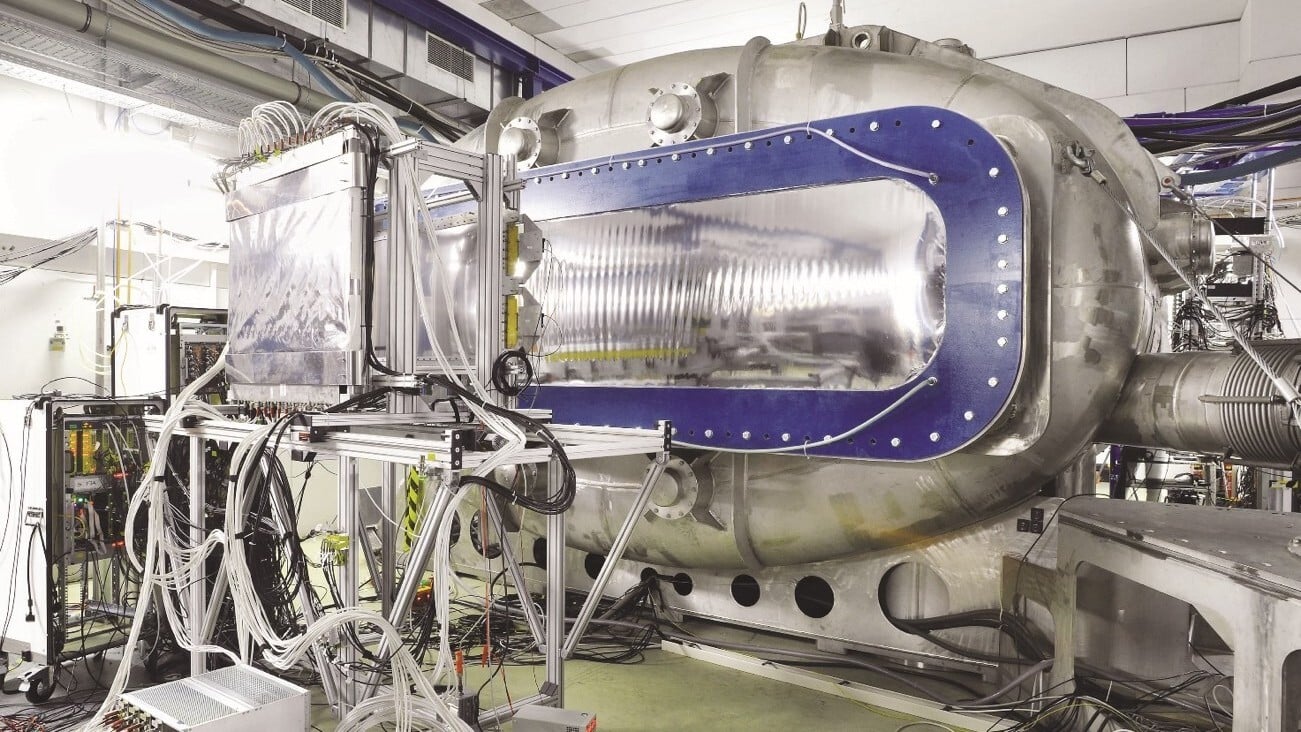The Institute of Corpuscular Physics, located in the UV Science Park, is participating in an experiment which for the first time observes that not only nuclei close to uranium are divided into nuclei of different sizes, what is known as 'asymmetric fission'. The finding has important implications for understanding the formation of heavy elements in stars and for power generation in nuclear fission reactors
The Institute of Corpuscular Physics (IFIC), which is located in the scientific-academic area of the Science Park of the University of Valencia, as well as a joint center of the CSIC and the University of Valencia, participates in a surprising finding published by the prestigious scientific journal Nature. In particular, it is the discovery of a new region of atomic nuclei that divide asymmetrically, producing two final nuclei of different size. This milestone shows that not only the uranium-related nuclei are fissioning asymmetrically, as was previously believed, and has important repercussions, in understanding the processes of transformation of matter in stars which lead to the formation of the heavier chemical elements of the periodic table, and in energy generation processes based on fission reactors.
Nuclear fission is the reaction in which the nucleus of a heavy atom splits into two nuclei of lighter atoms, called fission products, emitting neutrons, gamma rays and large amounts of energy. Until very recently, it was only possible to study the fission of the only five stable nuclei undergoing this process (uranium-238, uranium-235, uranium-234, thorium-232 and lead-208), as well as a few unstable nuclei which disintegrate after a short period of time, neighbors of the above in the periodic table of the elements.
These studies showed that nuclei close to uranium split asymmetrically, resulting in two final fragments of different size, while the nuclei around lead split symmetrically into two fragments of the same size. These two modes of fission were explained by Lise Meitner in 1950 using the atomic nucleus layer model proposed by Maria Goeppert-Mayer and Johannes Hans Jensen.
Magic number of protons
However, the results obtained by an international team in the R3B experiment at the GSI-FAIR research centre in Darmstadt (Germany) demonstrate the existence of a new region of unstable nuclei around mercury-180, which are also asymmetrical. This asymmetry is produced by stabilization around another magical number of protons, 36. In nuclear physics, magic numbers refer to quantities of protons or neutrons in an atomic nucleus for which the nucleus is particularly stable.
In order to make this discovery, the R3B team has developed a new method of studying the fission process, which consists of fissioning heavy nuclei that move at energies close to the speed of light. This technique has enabled them, for the first time, to determine the amount of protons and neutrons that make up the two fragments resulting from the fission process, as well as to study the fission of unstable nuclei.
Nuclear fission: a process known but not understood
Atomic nucleus fission is the phenomenon by which heavy atomic nuclei, such as uranium, divide into two intermediate-sized nuclei releasing a large amount of energy. This process was discovered by Otto Hahn and Fritz Strassmann in 1938, and its theoretical interpretation was provided shortly thereafter by Lise Meitner and Otto Frisch. This discovery generated great excitement, as fission was quickly identified as a possible source of controlled energy. In fact, a few years later, Enrico Fermi built the first fission reactor capable of generating energy on its own. Since then, nuclear fission has been one of the main sources of energy on which our society is based.
More recently, the simultaneous observation of gravitational and electromagnetic waves generated by the gravitational collapse of two neutron stars has confirmed not only that these phenomena are one of the stellar scenarios leading to their formation in the universe of chemical elements heavier than iron, but also that nuclear fission plays a very important role in this process.
"The results obtained by the R3B experiment are going to be fundamental in order to obtain an accurate description of the nuclear fission process in the near future.", José Benlliure, Dolores Cortina and Enrique Nácher, research staff at IFIC
Despite the enormous impact that fission has not only as a source of energy, but also to understand the origin of the chemical elements that make up our universe, more than 85 years after its discovery, there is still no detailed theoretical explanation of this process. "Therefore, the results obtained by the R3B experiment will be essential to obtain an accurate description of the nuclear fission process in the near future," say IFIC researchers José Benlliure, Dolores Cortina and Enrique Nácher participating in the experiment.
Spanish participation in the GSI-FAIR R3B experiment
In addition to this group of IFIC researchers, other research groups from the Instituto de Structure of Matter (IEM-CSIC) and the universities of Coruña, Santiago de Compostela and Vigo are involved in the R3B experiment. The international R3B collaboration is made up of more than 250 scientists from 34 institutions in 12 countries, under the coordination of Dolores Cortina at IFIC. Spanish participation in the R3B experiment dates back to 2007, when the construction of the new international research centre GSI-FAIR was proposed. Since then, Spanish researchers have contributed to the design and construction of the R3B experiment.
In particular, it is worth mentioning the Spanish contribution to the construction of the R3B calorimeter, CALIFA, and recently the construction of the trace detector, which records the trajectories of particles. The Spanish scientists are also leading some of the major research programmes being developed with R3B, in particular nuclear fission studies and characterisation of dense matter such as that which constitutes neutron stars. This participation is financed by various programmes of the Ministry of Science, Innovation and Universities, as well as European and regional programmes (Generalitat Valenciana and Xunta de Galicia).
Source: Delegation CSIC Comunitat Valenciana
--
Recent Posts


